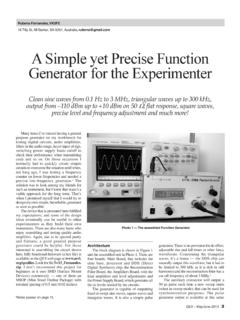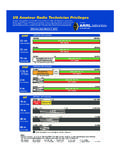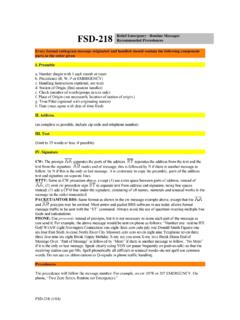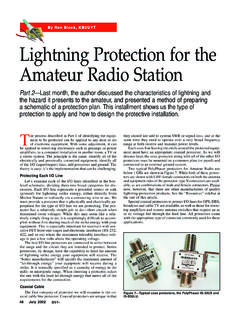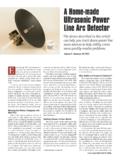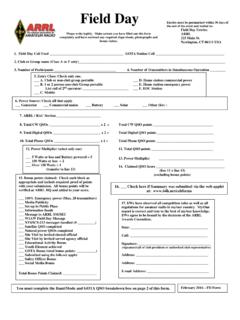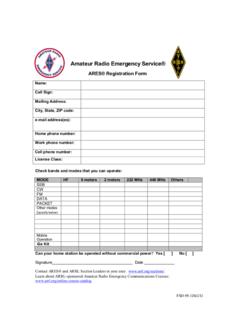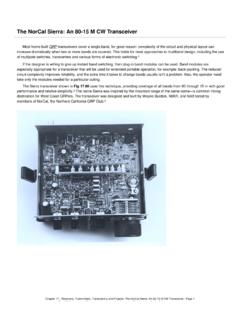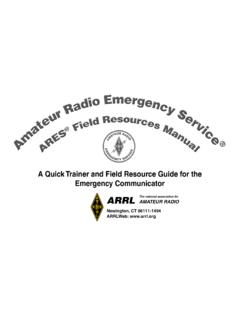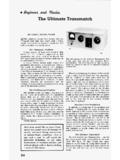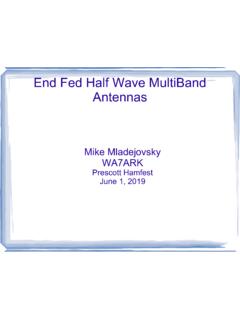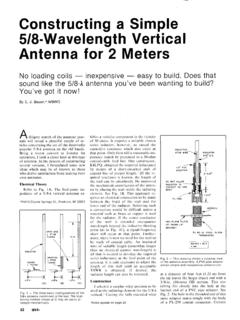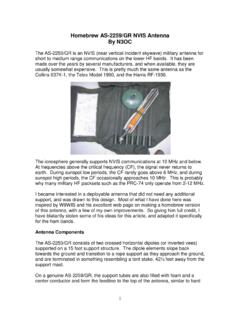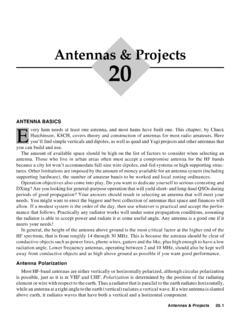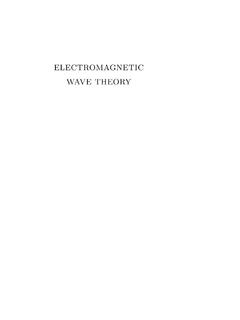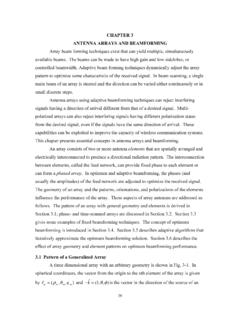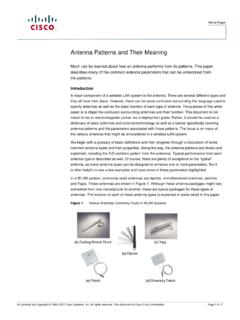Transcription of Antenna Height and Communications Effectiveness
1 Antenna HeightandCommunications EffectivenessSecond EditionA Guide for City Planners and Amateur Radio OperatorsBy R. Dean Straw, N6BV, and Gerald L. Hall, K1 TDSenior Assistant Technical Editor and Retired Associate Technical EditorCopyright 1999 The American Radio Relay League, Main StreetNewington, CT 06111 Page 1 Executive SummaryAmateur radio operators, or hams as they are called, communicate with stations located allover the world. Some contacts may be local in nature, while others may be literally halfwayaround the world. Hams use a variety of internationally allocated frequencies to accomplish for local contacts, which are primarily made on Very High and Ultra HighFrequencies (VHF and UHF), communicating between any two points on the earth rely primarilyon high-frequency (HF) signals propagating through the ionosphere.
2 The earth s ionosphere actsmuch like a mirror at heights of about 150 miles. The vertical angle of radiation of a signallaunched from an Antenna is one of the key factors determining effective communicationdistances. The ability to communicate over long distances generally requires a low radiationangle, meaning that an Antenna must be placed high above the ground in terms of the wavelengthof the radio wave being beam type of Antenna at a Height of 70 feet or more will provide greatly superiorperformance over the same Antenna at 35 feet, all other factors being equal. A Height of 120 feetor even higher will provide even more advantages for long-distance Communications .
3 To adistant receiving station, a transmitting Antenna at 120 feet will provide the effect ofapproximately 8 to 10 times more transmitting power than the same Antenna at 35 on the level of noise and interference, this performance disparity is often enough tomean the difference between making distant radio contact with fairly reliable signals, and beingunable to make distant contact at Amateurs have a well-deserved reputation for providing vital Communications inemergency situations, such as in the aftermath of a severe icestorm, a hurricane or an Communications at VHF or UHF frequencies also require sufficient Antenna heightsabove the local terrain to ensure that the Antenna has a clear terms of safety and aesthetic considerations, it might seem intuitively reasonable for aplanning board to want to restrict Antenna installations to low heights.
4 However, such heightrestrictions often prove very counterproductive and frustrating to all parties involved. If anamateur is restricted to low Antenna heights, say 35 feet, he will suffer from poor transmission ofhis own signals as well as poor reception of distant signals. In an attempt to compensate on thetransmitting side (he can t do anything about the poor reception problem), he might boost histransmitted power, say from 150 watts to 1,500 watts, the maximum legal limit. This ten-foldincrease in power will very significantly increase the potential for interference to telephones,televisions, VCRs and audio equipment in his , if the Antenna can be moved farther away from neighboring electronic devices putting it higher, in other words this will greatly reduce the likelihood of interference, whichdecreases at the inverse square of the distance.
5 For example, doubling the distance reduces thepotential for interference by 75%. As a further benefit, a large Antenna doesn t look anywherenear as large at 120 feet as it does close-up at 35 a not-so-inconsequential side benefit, moving an Antenna higher will also greatly reducethe potential of exposure to electromagnetic fields for neighboring human and and RF exposure standards have been thoroughly covered in recently enactedFederal 2 Antenna Height and CommunicationsEffectivenessBy R. Dean Straw, N6BV, and Gerald L. Hall, K1 TDSenior Assistant Technical Editor and Retired Associate Technical EditorThe purpose of this paper is to provide general information about communicationseffectiveness as related to the physical Height of antennas.
6 The intended audience is amateurradio operators and the city and town Planning Boards before which a radio amateur mustsometimes appear to obtain building permits for radio towers and performance of horizontally polarized antennas at heights of 35, 70 and 120 feet isexamined in detail. Vertically polarized arrays are not considered here because at short-wavefrequencies, over average terrain and at low radiation angles, they are usually less effective thanhorizontal PropagationFrequencies between 3 and 30 megahertz (abbreviated MHz) are often called the short-wave bands. In engineering terms this range of frequencies is defined as the high-frequency orHF portion of the radio spectrum.
7 HF radio Communications between two points that areseparated by more than about 15 to 25 miles depend almost solely on propagation of radiosignals through the ionosphere. The ionosphere is a region of the Earth s upper atmosphere thatis ionized primarily by ultraviolet rays from the Earth s ionosphere has the property that it will refract or bend radio waves passingthrough it. The ionosphere is not a single blanket of ionization. Instead, for a number ofcomplex reasons, a few discrete layers are formed at different heights above the earth. From thestandpoint of radio propagation, each ionized layer has distinctive characteristics, relatedprimarily to different amounts of ionization in the various layers.
8 The ionized layer that is mostuseful for HF radio communication is called the F F layer exists at heights varying from approximately 130 to 260 miles above the earth ssurface. Both the layer Height and the amount of ionization depend on the latitude from theequator, the time of day, the season of the year, and on the level of sunspot activity. Sunspotactivity varies generally in cycles that are approximately 11 years in duration, although short-term bursts of activity may create changes in propagation conditions that last anywhere from afew minutes to several days. The ionosphere is not homogeneous, and is undergoing continualchange.
9 In fact, the exact state of the ionosphere at any one time is so variable that is bestdescribed in statistical F layer disappears at night in periods of low and medium solar activity, as the ultravioletenergy required to sustain ionization is no longer received from the Sun. The amount that apassing radio wave will bend in an ionospheric layer is directly related to the intensity ofionization in that layer, and to the frequency of the radio triangle may be used to portray the cross-sectional path of ionospheric radio-wave travel,as shown in Fig 1, a highly simplified picture of what happens in propagation of radio base of the triangle is the surface of the Earth between two distant points, and the apex of thetriangle is the point representing refraction in the ionosphere.
10 If all the necessary conditions arePage 3met, the radio wave will travel from the first point on the Earth s surface to the ionosphere,where it will be bent (refracted) sufficiently to travel to the second point on the earth, manyhundreds of miles course the Earth s surface is not a flat plane, but instead is curved. High-frequency radiowaves behave in essentially the same manner as light waves they tend to travel in straight lines,but with a slight amount of downward bending caused by refraction in the air. For this reason itis not possible to communicate by a direct path over distances greater than about 15 to 25 milesin this frequency range, slightly farther than the optical horizon.
